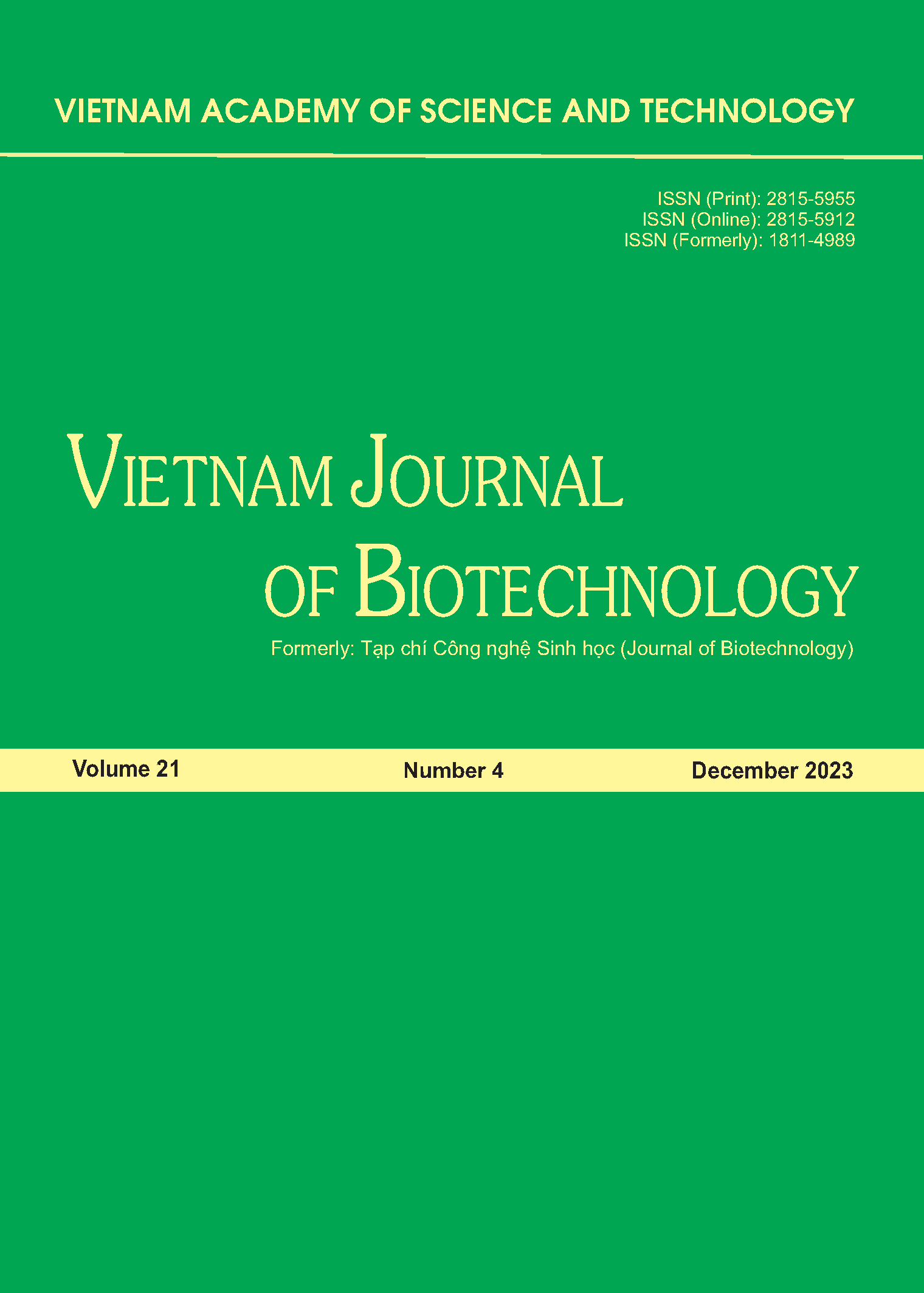Investigation of the influence of microalgal culture medium on biomass production
Author affiliations
DOI:
https://doi.org/10.15625/1811-4989/20567Abstract
Microalgae have been shown to produce a variety of products, including biofuels, proteins, and beta-carotene. However,increasing their biomass production still requires a lot of effort from researchers. Biomass from different culture media has presented challenges and possible solutions to improve microalgae production efficiency. In addition to factors such as light and temperature, nutrients also affect microalgal culture media. This study has developed basic experiments revolving around the fluctuations of essential nutrients such as carbon (C), nitrogen (N), phosphorus (P) during the cultivation ofChlorella vulgaris on Bold’s Basal Medium (BBM). As a result, reducing or increasing the N and P concentrations by half,and replacing C in NaHCO3 with glucose significantly changed the growth curve of C. vulgaris. There were significant fluctuations in the microalgal characteristics of the lag phase and the stable phase, with the former being longer and the latter being shorter compared to BBM. Additionally, the maximum biomass obtained was 1.95 g/L dry weight when microalgae were cultivated in medium containing glucose (M1), where the C concentration was replaced by glucose, and 1.56 g/L when the P content was increased 1.5 times compared to 1.35 g/L of dry weight in BBM. However, reducing or increasing nitrogen content by half inhibited cell growth, leading to low biomass efficiency of only 1.07 g/L and 1.21 g/L, respectively. On the other hand, changes in the essential nutritional composition of the culture medium also affected the efficiency of settling of C. vulgaris, this value was higher than 80% in all media compared to BBM.
Downloads
Downloads
Published
How to Cite
Issue
Section
Funding data
-
Đại học Đà Nẵng
Grant numbers SV2024-49







